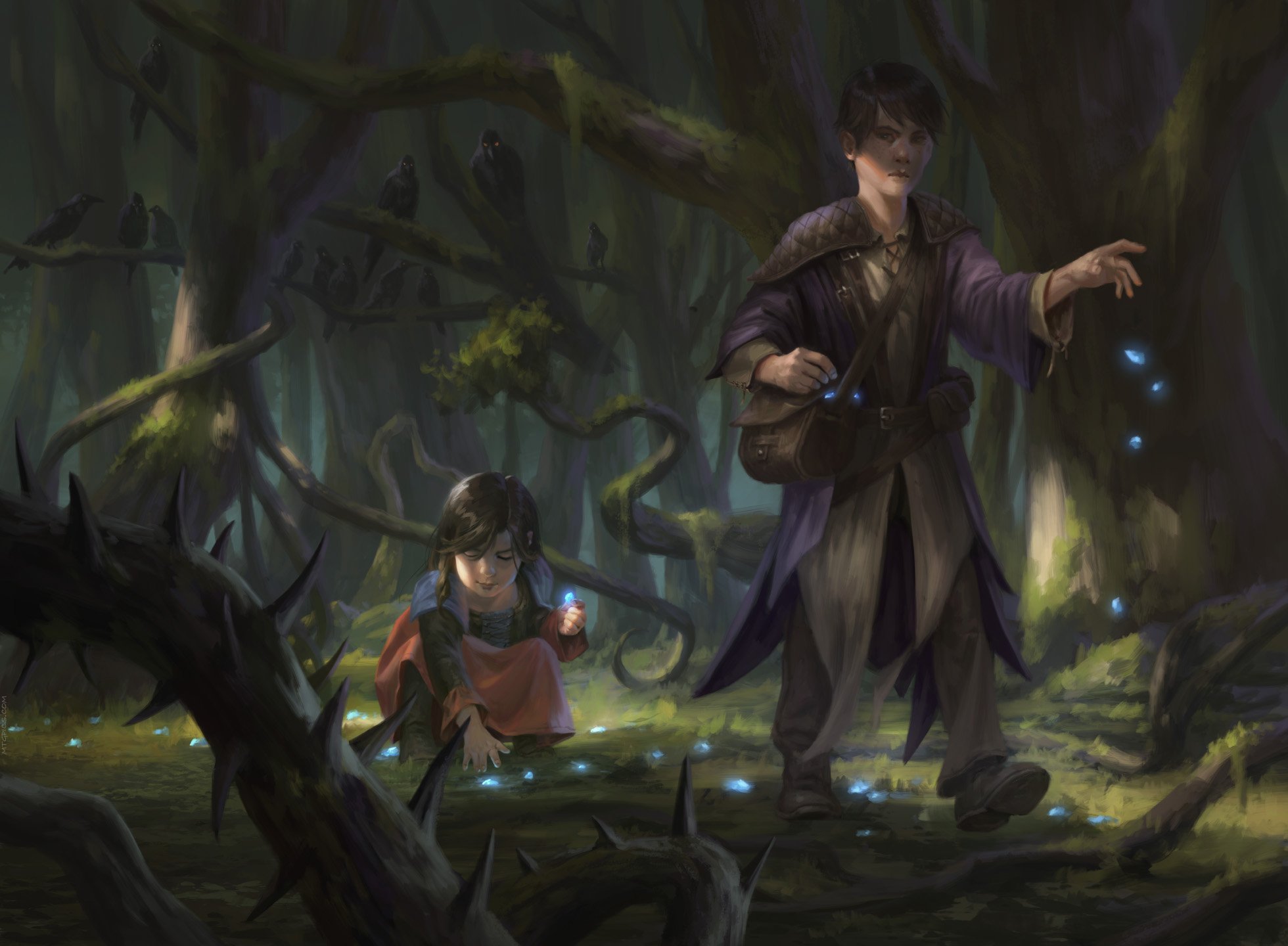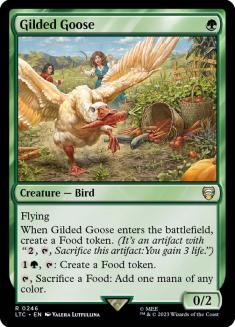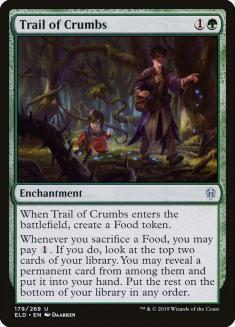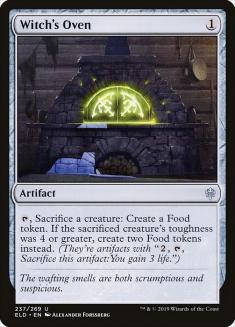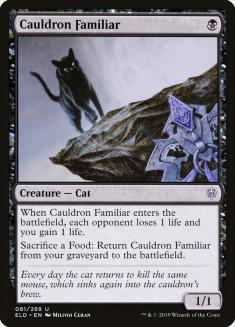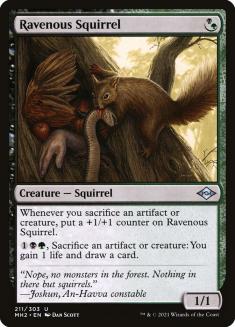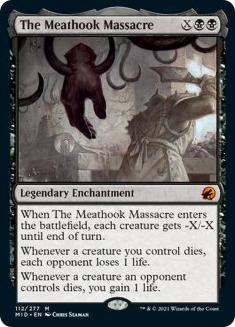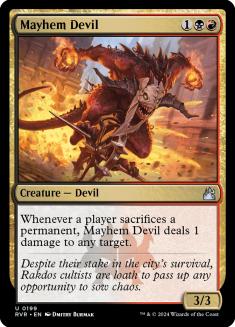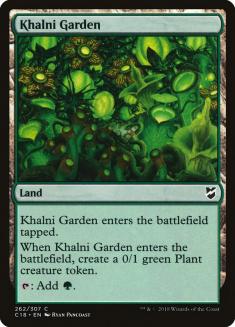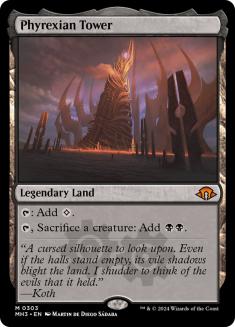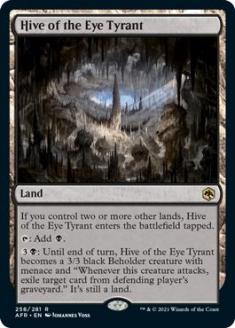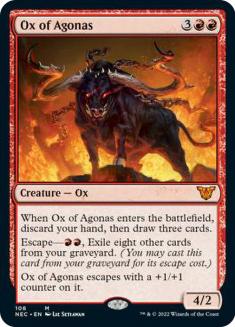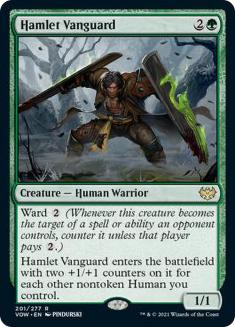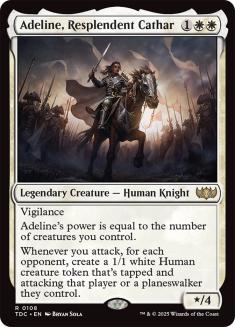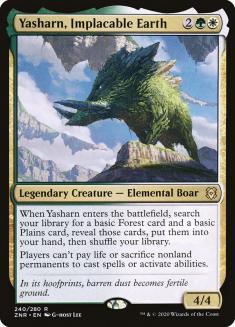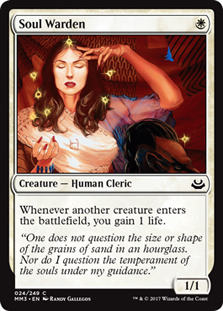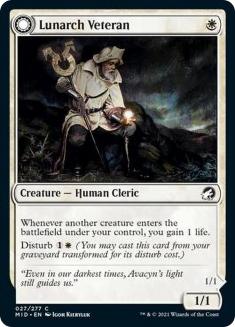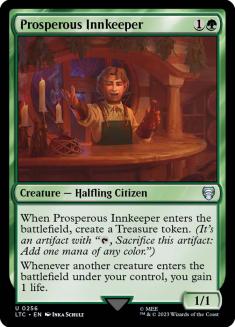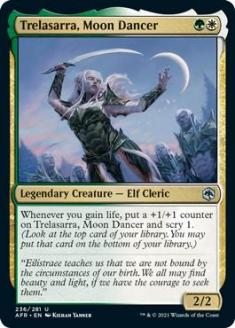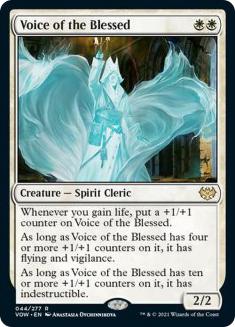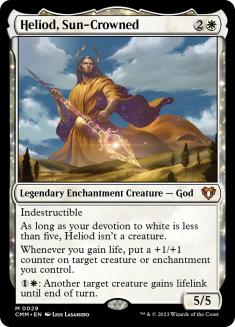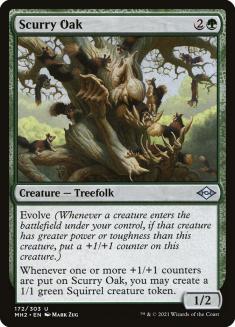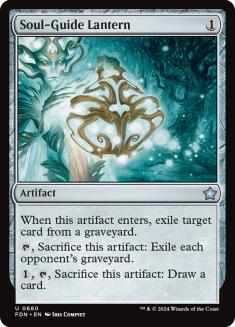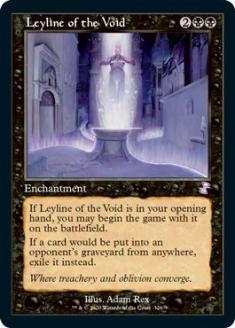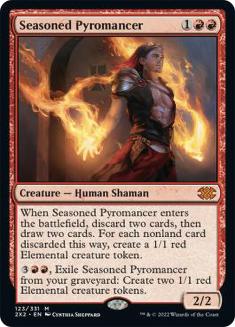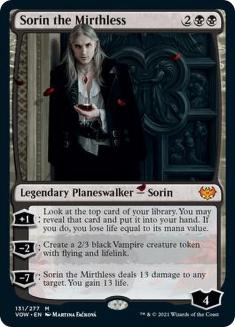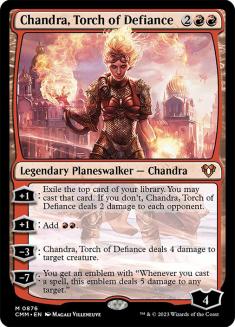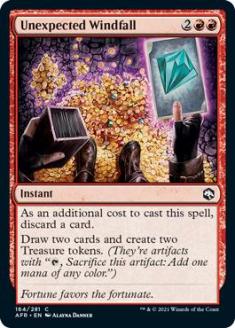The Innistrad Championship was a study in contrasts. Standard was thrown wide open by Innistrad: Crimson Vow as Thalia, Guardian of Thraben stepped up to slay the Alrund’s Epiphany menace…
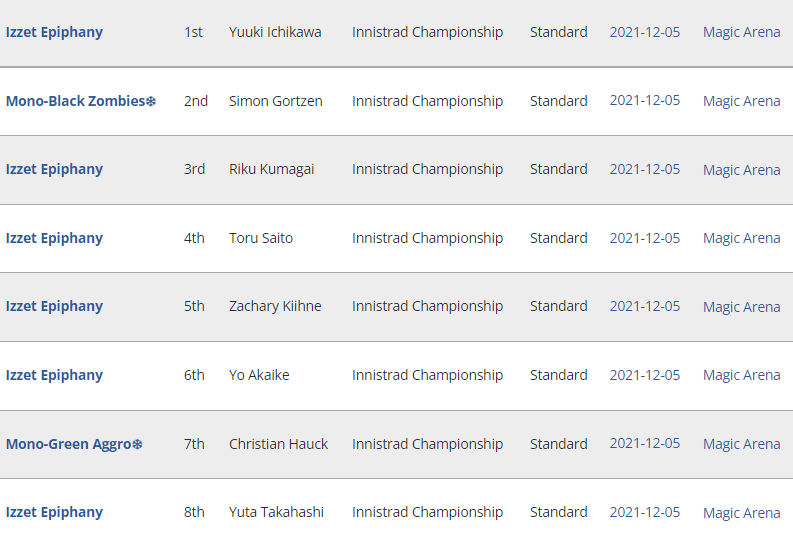
Ah, well. Nevertheless…
Meanwhile, Historic truly was wide open for the first time in forever. The ban of yet another Mystical Archive card in Memory Lapse was a necessary blow to blue decks across the board and the last few sets proved to be surprisingly relevant for Historic. The lack of any previous high-stakes Historic tournaments under these conditions was a sad statement about the level of interest in the format and left players and viewers without a reliable baseline for what to expect. With this event playing no clear role in a larger system of Organized Play, many disillusioned former MPL/Rivals members made it clear they were not taking the event too seriously.
All this meant there was potentially a massive edge for someone to claim in Historic if they put the work in. It’s safe to say this paid off for one team in particular:
Creatures (15)
Lands (22)
Spells (23)

Yuuki Ichikawa’s win was the exclamation point on another dominant performance by this group of Japanese players following their storming of the MPL Gauntlet. This approach to Food — straight Golgari, Lurrus of the Dream-Den as a companion, The Meathook Massacre as the big finish — was a known quantity before the event and this result can be seen as a classic case of strong players showing up with a tuned list of a best deck.
The Food/Sacrifice engine has been the most consistently strong package in the format since Throne of Eldraine but this version leans into one of its more subtle strengths. Sorting this deck by mana curve reveals a staggering 26 one-drops; if you throw in Deadly Dispute, which has a net cost of one mana if you’re fine using the Treasure now, that’s a full half of the deck (a stat that even the most efficient Modern and Legacy decks would be jealous of). To whatever extent it’s (still) true that Magic is about using the most mana as efficiently as possible, Golgari Food (Lurrus) meets that criteria better than any other deck in the format.
This isn’t just an abstract ideal. It’s a priority when your card advantage comes from Trail of Crumbs, a highly mana-hungry card especially when you’re manually sacrificing Food tokens. It’s much easier to justify using mana to dig for a spell when you’re very likely to cast it immediately.
The newest and most impressive one-drop in this roster is Ravenous Squirrel. This deck can perform a lot of game actions thanks to its compressed curve but this doesn’t inherently amount to anything. If you control a Ravenous Squirrel, it quickly becomes by far the largest creature on any battlefield. Squirrel is what lets you have a chance of racing the combo decks that can shrug off your incremental card advantage — just look at this opening from Ichikawa in the finals against Izzet Phoenix:
- Turn 1: Shambling Ghast
- Turn 2: A pair of Ravenous Squirrels
- Turn 3: Cast Deadly Dispute sacrificing Shambling Ghast, which creates a Treasure (Squirrels are now 2/2). Play a third land and cast Cauldron Familiar. Sacrifice the two Treasure from Ghast and Dispute (4/4) to cast a second Dispute, sacrificing Familiar (5/5). This creates a Treasure, which is then sacrificed to cast Soul-Guide Lantern (6/6, with Lantern threatening an additional counter at any time). Attack for at least twelve damage.
Ravenous Squirrel forces the opponent to respect it with removal that otherwise lines up poorly against Cauldron Familiar or Shambling Ghast. That removal can never trade up on mana against Squirrel and puts them down at least one card if you can sacrifice Squirrel to itself or Deadly Dispute.
If that weren’t enough, Ravenous Squirrel is the additional sacrifice outlet and card advantage engine the deck sorely needed. It’s the card that pushed Golgari Food into the spotlight and one of the main reasons to play it.
The Meathook Massacre is the other big pickup that lets the deck drop its third colour and stay in Golgari. Mayhem Devil is a phenomenal card — not least in the Food mirrors you have to expect if you think this is the best deck — but it demands a third colour, needs your engine to be online already, and is a legitimately good target for removal. The Meathook Massacre sweeps the opponent’s battlefield that they had to commit to before being buried by Trail of Crumbs and enhances the Cauldron Familiar + Witch’s Oven combo while dodging interaction itself. Without Mayhem Devil (and other three-drops found alongside it like Woe Strider) you have access to Lurrus of the Dream-Den, which lets you recast The Meathook Massacre (turning the legend rule to your advantage in some cases).
Dropping red replaces an occasionally painful and shaky manabase with a clean, pain-free one that has room for on-theme utility lands. Khalni Garden acts as another source of fuel for Deadly Dispute and the like while Phyrexian Tower can help to power out a big Massacre.
Golgari Food isn’t a strict upgrade to previous variants. Shota Yasooka, typically associated with control decks but quietly a Jund Sacrifice specialist over this past year of Historic tournaments, went 6-1 in Historic with Jund Food incorporating Ravenous Squirrel and Deadly Dispute:
Creatures (18)
Lands (22)
Spells (20)

Meanwhile, the perpetually semi-retired Ondrej Strasky asks the question that anyone checking in on the format after a while will be wondering. The Czech list of Jund Sacrifice is a typically solid starting point if you prefer that model — and, judging by the results of this event and the feedback from other competitors in that Twitter thread, Mayhem Devil is the place to be.
Creatures (26)
- 2 Scrapheap Scrounger
- 4 Priest of Forgotten Gods
- 4 Mayhem Devil
- 4 Gilded Goose
- 4 Cauldron Familiar
- 4 Woe Strider
- 4 Ravenous Squirrel
Lands (22)
Spells (12)

Izzet Phoenix was another predictable best deck contender and lived up to that reputation as the deck of choice for three members of the Top 8 and another three of the Top 16. Beyond the obvious core of the deck there was an impressive level of diversity among successful Phoenix lists.
Creatures (14)
Lands (20)
Spells (26)

Simon Gortzen was one game away from a second Pro Tour (-ish?) title with a unique threat package featuring Delver of Secrets, a card that people desperately want to be good in Historic but never got the chance to coexist with Brainstorm. You can’t rig that subgame quite so easily here but a one-drop threat is very appealing when you want to chain cantrips or take several spells with Expressive Iteration.
Creatures (13)
Lands (15)
Spells (32)

Andrey Zhilin’s list takes a much more aggressive approach to his spell slots, throwing away cards in hand to fill his graveyard with Otherworldly Gaze or chain together ‘free’ spells like Strike it Rich for a fast Phoenix or Demilich. This high density of spells and threats that can be played from the graveyard — including the ever-terrifying Maximize Velocity — makes this apparent loss of resources (which is also implicit in Phoenix staple Faithless Looting) easier to stomach. It’s a different and radical deckbuilding philosophy but a cohesive one.
Creatures (14)
Lands (14)
Spells (32)

World Champion and Izzet master Yuta Takahashi is the go-to for a safe and solid Phoenix list. The emphasis on Flame-Blessed Bolt stands out here — the perfect removal spell for an opposing Arclight Phoenix but also against the various small creature decks that you know would be well-represented.
Creatures (15)
- 1 Grim Lavamancer
- 4 Arclight Phoenix
- 1 Crackling Drake
- 1 Seasoned Pyromancer
- 1 Ox of Agonas
- 2 Sprite Dragon
- 4 Dragon's Rage Channeler
- 1 Demilich
Lands (13)
Spells (32)

Logan Nettles’s one-of-everything approach to threat selection is a great illustration of how many choices there are but also has some strategic merit for a deck with this much card selection. Doubling up on any one threat increases your exposure to that threat’s weaknesses and when you see so much of your deck you have more control over which threats you can line up against specific responses. Paulo mentioned before the event that he likes Stormwing Entity — the one popular threat Logan isn’t playing! — in small numbers given the popularity of Portable Hole and Skyclave Apparition, for example.
One recurring feature in these lists (aside from Zhilin’s, the most graveyard-centric of all!) is the focus on Ox of Agonas. After its Standard role as a hate card for Dimir Rogues that you could bring in elsewhere (“for the grindy matchups”), I had assumed it would be similar here — a good sideboard tool for drawn-out slugfests. Instead, the card is everywhere in Izzet Phoenix maindecks and during the tournament I saw players leaving it in against fast creature decks where it seemed far too slow to accomplish a goal that was misguided in the first place. The fact that this behaviour was so automatic was a good opportunity to rethink my assumptions about how those matchups play out in practice and how strong the card is there.
Creatures (33)
- 4 Thalia, Guardian of Thraben
- 1 Thraben Inspector
- 4 Thalia's Lieutenant
- 4 Ranger-Captain of Eos
- 1 Giant Killer
- 4 Luminarch Aspirant
- 4 Esper Sentinel
- 3 Brutal Cathar
- 3 Adeline, Resplendent Cathar
- 3 Hamlet Vanguard
- 2 Ollenbock Escort
Lands (23)
Spells (4)

Selesnya Humans was at once the new kid on the block and the expected most popular deck in the tournament (or the default choice if you were at a loss yourself). The deck follows the same formula that brought Humans success in Modern — impressive pressure and disruption to back it up folded into the same cards. Thalia, Guardian of Thraben is just as good as you’d expect there but Ranger-Captain of Eos deserves special attention. It can buy a crucial turn against Wrath of God and disable Mizzix’s Mastery or Finale of Promise but is also a great card across the board, finding Giant Killer for their largest threat or the new Ollenbock Escort to swing a race or protect a giant Hamlet Vanguard (or anything pumped by Thalia’s Lieutenant or Luminarch Aspirant).
Vanguard has an interesting interplay with removal. It’s hard to target and rapidly outsizes damage-based removal but your other, flimsier Humans can be shot down to shrink it in advance. Esper Sentinel and Thalia make that harder and army-in-a-can cards like Ranger-Captain and Collected Company mean that even premium one-for-one removal like Unholy Heat isn’t as backbreaking as you’d think. Meanwhile, Hamlet Vanguard and Adeline, Resplendent Cathar give you the raw speed to race linear decks and the sizing to beat the mirror and anyone else fighting on the ground.
White also enjoys some of the strongest hate cards in Historic. Rest in Peace is necessary against the Unholy Heat decks and a good hedge against nonsense; Yasharn, Implacable Earth is so strong against the Sacrifice decks that Sultai Midrange splashed a fourth colour for it and Humans badly needs the help against Cauldron Familiar.
Creatures (29)
- 4 Soul Warden
- 3 Ranger-Captain of Eos
- 4 Heliod, Sun-Crowned
- 1 Selfless Savior
- 2 Skyclave Apparition
- 4 Scurry Oak
- 4 Trelasarra, Moon Dancer
- 3 Lunarch Veteran
- 4 Voice of the Blessed
Lands (15)
Spells (16)

Selesnya Heliod was a known unknown for this tournament — a deck that was gaining momentum and was conceptually appealing but hadn’t had the chance to prove itself yet. It’s also an example of Historic at its best, a blend of cards from ‘regular’ sets and the cards injected into the format at random intervals. Each of the past four set releases has had at least one essential card for this deck and the total package has finally come together.
The premise here is simple and familiar; play the many creatures that give you life when other creatures enter the battlefield and pair them with the creatures that care about that. Lunarch Veteran and Prosperous Innkeeper are recent examples that give you the needed redundancy on that effect. Simon Nielsen even turned to Ajani’s Welcome to make the ideal curve of Turn 1 Soul Warden into Turn 2 Ajani’s Pridemate as likely as possible.
Actual Ajani’s Pridemate is underwhelming but these new models offer a lot more. Trelasarra, Moon Dancer lets you tear through your deck to find a missing combo piece, removal, or Collected Company while Voice of the Blessed flies over the Cauldron Familiars that want to block it indefinitely and contributes two white pips for Heliod, Sun-Crowned (which is surprisingly hard to animate in this deck). Gaining large amounts of life and building a big attacker is a strong recipe against Selesnya Humans or any dedicated aggro decks like Mono-Red Madness.
It wouldn’t be a Heliod deck without an infinite combo of some kind. With a Soul Warden effect on the battlefield, any creature entering lets Heliod put a +1/+1 counter on Scurry Oak, creating a Squirrel token, which triggers Soul Warden, which in turn triggers Heliod again. This gets you infinite life, an infinitely large Scurry Oak, and an infinite legion of Squirrels (for whatever approximation of ‘infinite’ you can reach with the Arena rope). This gets messy in the mirror or against sweepers (notably The Meathook Massacre from Golgari Food) unless you also have Voice of the Blessed for a clean kill right away.
As a rule, Selesnya Heliod is excellent against other interaction-light creature decks and poor vs control or interaction-heavy decks such as another top performer from this weekend:
Creatures (14)
Planeswalkers (3)
Lands (20)
Spells (23)

Another breakout deck that’s really a throwback, Nassif/Merkel’s bigger take on Rakdos Arcanist was quietly one of the most successful decks in the tournament despite its lack of Top 8 conversion.
Moving away from Lurrus of the Dream-Den is a real sacrifice. Rakdos Arcanist was not only very good against other Lurrus decks but one of the better Lurrus decks itself. Additionally, Jumpstart: Historic Horizons gave gifts like Dragon’s Rage Channeler that let you have enough legitimate threats under Lurrus’s restriction.
The problem is that all of these threats as well as Lurrus itself are heavily reliant on the graveyard, a zone wearing a serious target right now. The Adventures in the Forgotten Realms creature-lands like Den of the Bugbear and Hive of the Eye Tyrant help a little there (and are a big boon to the deck in general) but those aren’t enough by themselves. Martin Juza’s Pack Rats are the best non-graveyard threat I’ve seen for the Lurrus builds but I’m skeptical.
Lifting Lurrus’s mana value restriction opens up a whole world of threats that can shrug off Rest in Peace. Beyond its role there, Seasoned Pyromancer is the perfect card for this strategy. It sifts through dead discard spells once you’ve shredded their hand or the removal spells with no targets against control, addressing the inherent problem with interactive midrange decks.
Creatures (3)
Lands (18)
Spells (39)

Over the past few years of Standard, the best deck there has usually been at least playable in Historic and it’s natural to make that leap with Izzet Epiphany. The various Izzet combo-control decks have lots of appealing tools at their fingertips and Galvanic Iteration, in particular, picks up more cheap spells to copy.
In practice, the players who registered Izzet Epiphany in both formats won in Standard where it’s still easily the best deck and flopped hard in Historic. Kanister was visibly relieved when he won a single match of Historic with a deck he wasn’t sure was ‘functional’.
Another old favourite in this space had a much better weekend:
Creatures (3)
Lands (24)
Spells (33)

Jeskai Indomitable Creativity was on top of Historic back in May, where Time Warp made Velomachus Lorehold the payoff of choice. As the format settled again after several convulsions, Jeskai Indomitable Creativity headlined by Serra’s Emissary was a consensus best deck — until it promptly vanished from the conversation altogether. Going into the Innistrad Championship, Creativity in all its forms was barely on the radar.
Unexpected Windfall somehow ticks every box for this deck. It creates multiple removal-resistant targets for Creativity, digs for the Creativity, and gives you the mana to cast it with a high value of X to fight through interaction. With Windfall you go from not wanting to draw your Creativity hits to actively hoping for that sometimes. Windfall both ramps into Serra’s Emissary (or Hullbreaker Horror/Nezahal, Primal Tide in blue mirrors) and fixes your mana for it, with the buyout of discarding it if that won’t help. As in Standard, it’s also a strong setup or test spell against other blue decks, letting you prepare for and fight over your eventual big turn.
The elevator pitch for Jeskai Creativity, a stable but fast combo-control deck that gets to play the best interaction in the format and has good sideboard pivots, is as compelling as ever and its results in this tournament were impressive.
After a prolonged identity crisis and a turbulent few years, competitive Historic actually looks diverse and engaging. Here’s hoping there’s a reason to care about it again the next Set Championship.

